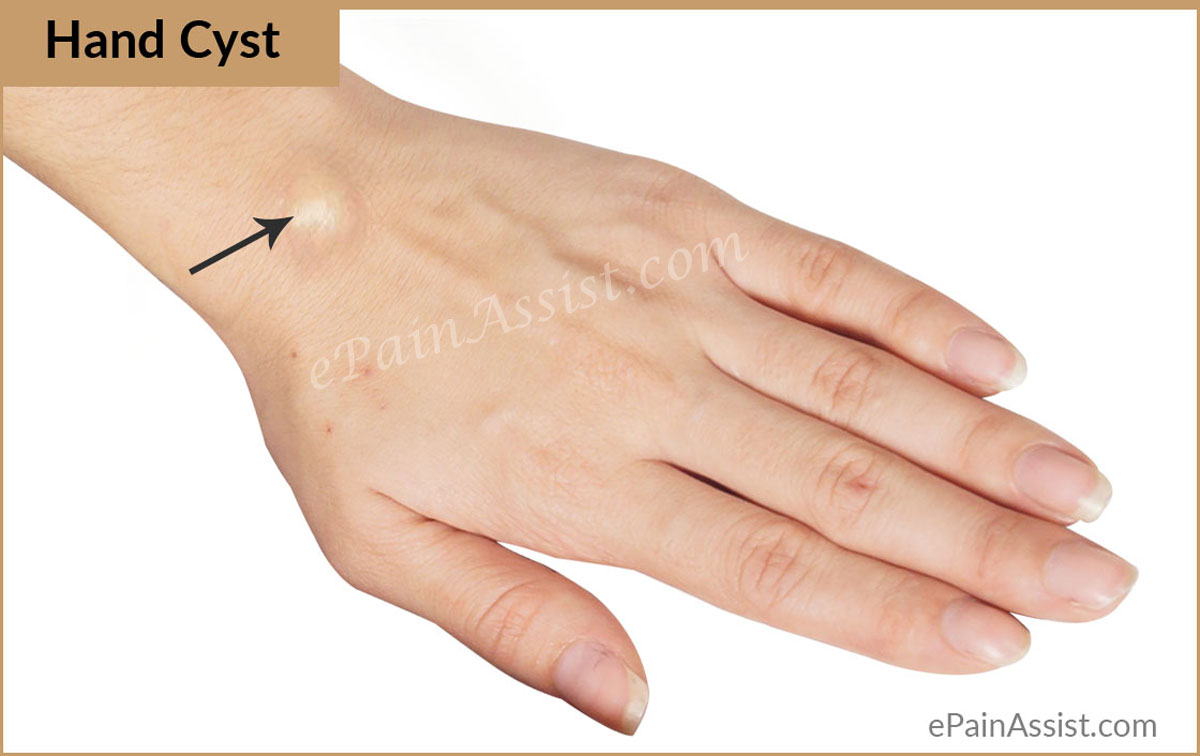What Is Hand Cyst?
A cyst in the hand or a hand cyst is a lump or bump which forms on the hand.1 These types of cysts are a very common sight and are benign in nature and in most cases do not cause any damage to the adjoining structures of the hand. Hand Cysts can develop in any location in the hand or the wrist, but usually they are found behind the wrist. Hand Cysts are filled with colorless fluid and tend to develop and resolve on their own. These cysts are quite variable in size. Majority of hand cysts do not require any treatment and heal on their own, although in some cases these cysts may become painful and may present as a cosmetic embarrassment to the affected individual and may require treatment to correct the problem. These cysts usually grow out of the tissues of the hands. As stated these cysts can be formed at various parts of the hand including the fingers or near the nail bed. These cysts tend to grow in size with increased activity of the hand or wrist and decreases in size with rest and reduced activity of the hand or wrist.
What Causes Hand Cyst?
The root cause of the formation of Hand Cysts is not known, but literature suggests increased stress to the hands or wrist as a cause of the formation of Hand Cysts. Hence Hand Cysts are more common in sportsmen involved in gymnastics as they tend to put more stress in their hands and wrists. Hand Cysts are found most in females in age range of 20-40 years. These cysts can also form due to arthritis of the bones and can be found in individuals above the age of 50 years.
What Are The Symptoms Of Hand Cyst?
Majority of the Hand Cysts can be visible and can be seen clearly. They are usually painless but in some cases may cause pain especially when putting stress on the affected hand or wrist. There may also be muscle weakness with numbness and tingling with increased activity of the hand and wrist. Hand Cysts which are quite large in size may also be a cause of cosmetic embarrassment to the affected individual.
How Is Hand Cyst Diagnosed?
Since Hand Cysts are clearly visible to the naked eye hence it does not pose a great amount of problem for the treating physician to diagnose them. However, the treating physician begins by taking a detailed history of the patient asking as to when the cyst became visible and whether the patient uses the hand and wrist excessively at home or at work. The next thing the physician will do is to conduct a physical examination looking for areas of tenderness or if there is any pain to palpation of the affected site. The physician may also press the cyst a bit to see if some fluid is expressed out of the cyst or not. Apart from this the physician may also order radiologic studies in the form of x-rays or MRI scan to look at the structures to look for any damage to the adjoining structures. These are normally done in cases where the size of the cyst is quite large and the cysts are painful to touch. These studies may also be done to rule out any bone tumor or any condition like arthritis causing formation of the cyst.
How Is Hand Cyst Treated?
There are basically two approaches to treatment of Hand Cysts both conservative and interventional approaches.
Initially, Hand Cysts are treated with watchful waiting to observe if they resolve on their own which is the case with most of the cysts. During this time, the physician will observe for any emerging symptoms or any change in the size of the cyst. Since Hand Cysts increase in size with activity, the physician may recommend immobilizing the hand for some time so as to decrease the stress on the hand and wrist and calm down the nerves and tissues. This may be done by utilizing a brace or a splint. When the cyst starts to decrease in size the physician will recommend certain strengthening exercises of the hands and wrist and also some exercises to improve range of motion.
If by the above method there is no change in the size of the cyst and the symptoms do not resolve then the next step is to conduct a procedure called as aspiration. In this procedure, a needle is inserted inside the cyst and the fluid inside the cyst is drained out. A steroid injection is done next to prevent recurrence of the cyst. This procedure is done mostly for cysts which are present at the top of the wrist.
In case if the cyst is quite large and not amenable to aspiration then the physician may refer the patient to a hand surgeon who may recommend excision of the cyst. In this procedure, the surgeon will remove the cyst in its entirety. This procedure may be done as an inpatient or an outpatient. The benefit of excising the cyst is that the chances of recurrence of the cyst are greatly reduced.
Hand Cysts normally have a high recurrence rate; hence, it is not surprising that an individual treated before develops Hand Cysts again and again and needs frequent treatment with either aspiration or surgical excision for Hand Cysts.


